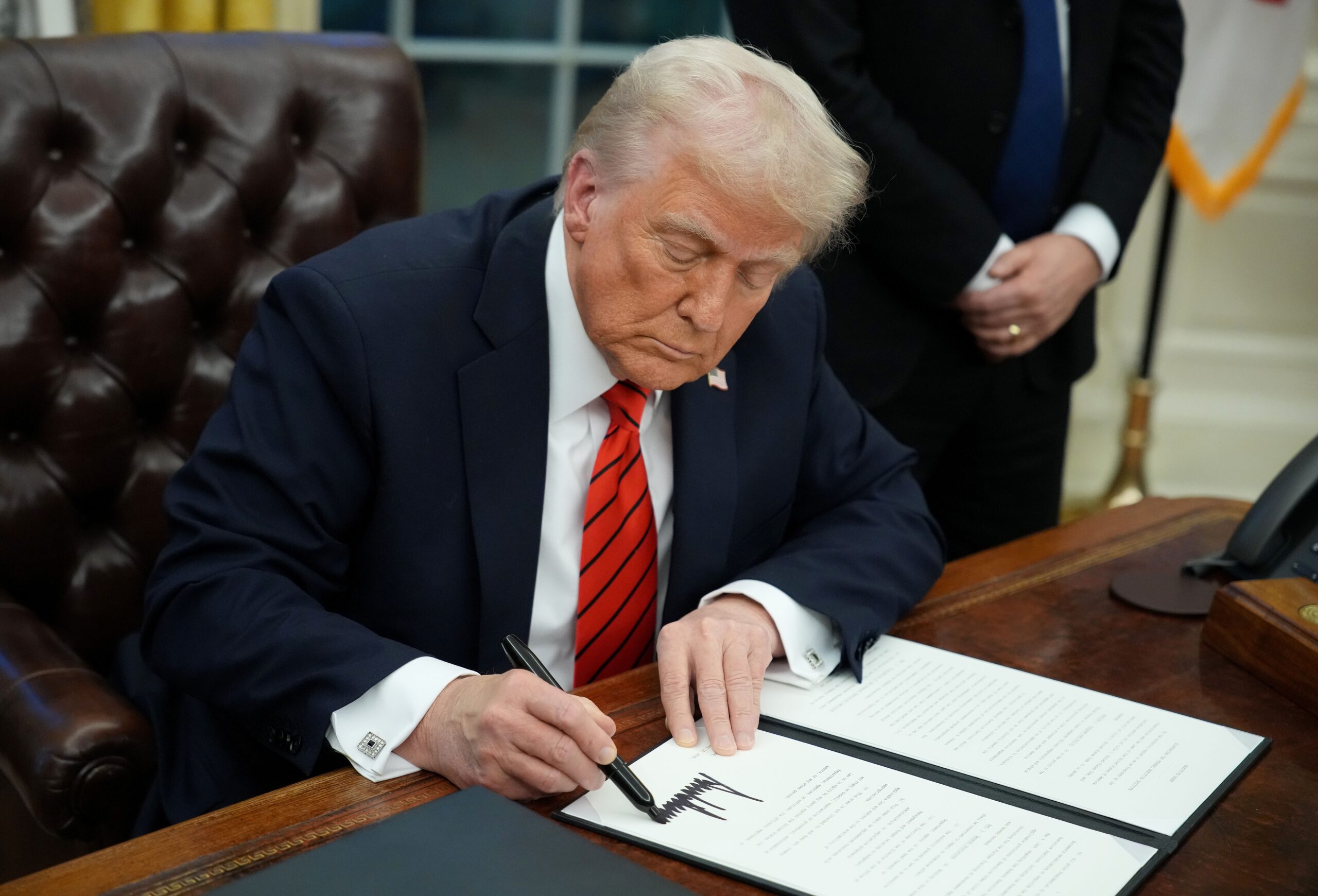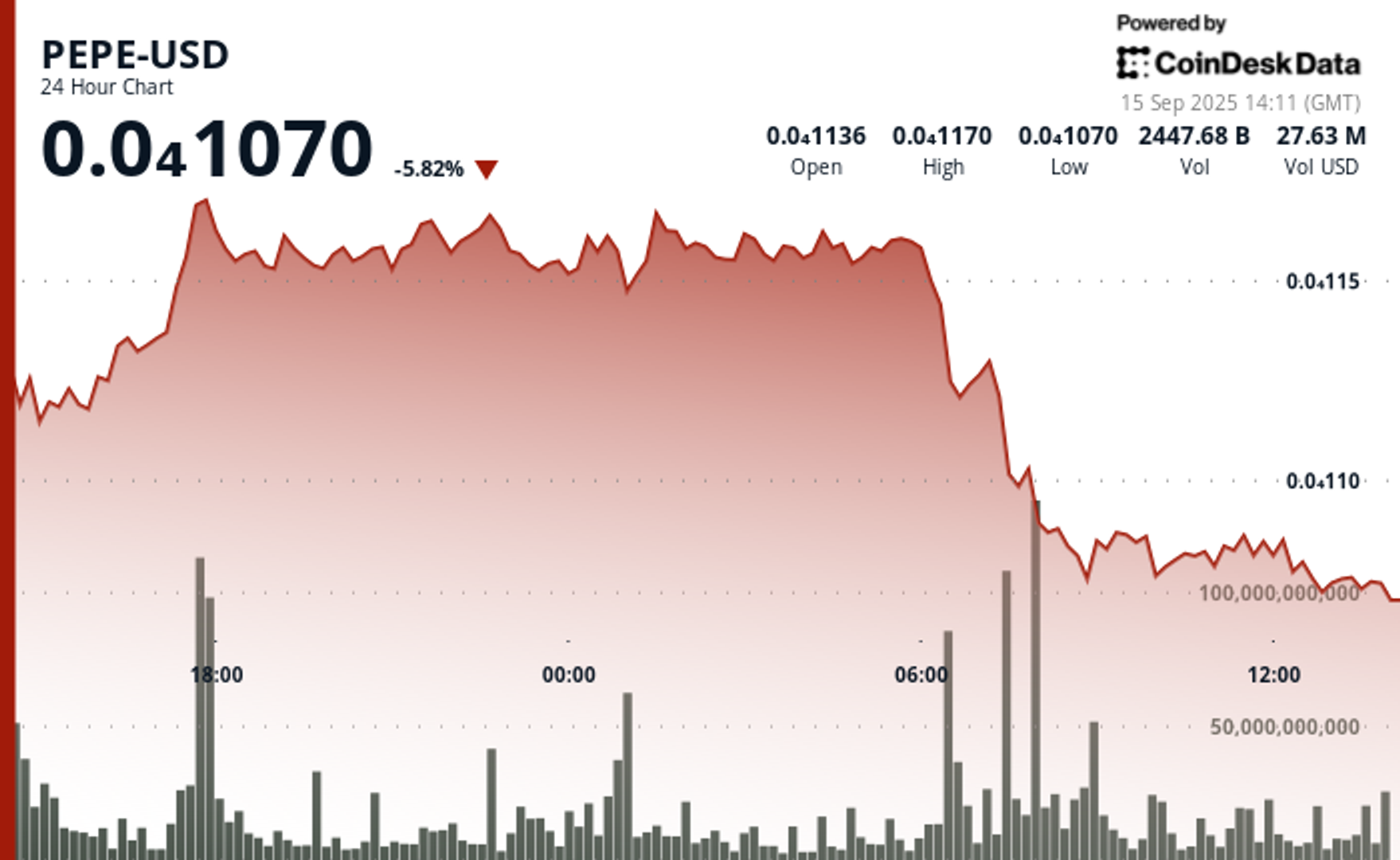Uncategorized
Trump Has Made His Major Decisions on His Crypto Regulation Team, Now Also OCC

President Donald Trump is just about done naming the key figures he’s seeking to get into financial regulation posts that will direct the future oversight of the crypto industry, now including lawyer Jonathan Gould as a nominee to run the Office of the Comptroller of the Currency that oversees U.S. national banks.
With a widely circulated White House nominations document showing Trump has settled on Gould, a partner at law firm Jones Day who was a top lawyer at the OCC and a former crypto executive, and the president will reportedly nominate the Federal Deposit Insurance Corp.’s Jonathan McKernan to run the Consumer Financial Protection Bureau, the slate is almost clear.
Gould had briefly worked as the chief legal officer for blockchain technology company Bitfury after he left the OCC as senior deputy comptroller and chief counsel during the first Trump administration. At Bitfury, he worked for CEO Brian Brooks, who Trump had once installed at the OCC as an acting comptroller and also tried to make it permanent. At the OCC, Brooks worked to open U.S. banking for crypto firms, and he elevated Anchorage Digital as the first and only crypto bank chartered by the agency. Now the industry will find out if Gould will follow in those footsteps.
«For crypto, we believe Gould could seek to revive the concept of a limited-purpose national bank charter,» said Jaret Seiberg, a policy analyst at TD Cowen, in a note to clients on Wednesday. «That could lead to banks that specialize in crypto. We also believe he would permit banks to get more involved with crypto including stablecoins.»
Rodney Hood, a former Republican chief of the National Credit Union Association, had been placed as Trump’s temporary comptroller and would be replaced by Gould if he wins his Senate confirmation. Temporary Republican replacements like Hood are now leading most of the financial regulators, including banking agencies, the FDIC and OCC; the pair of markets regulators, the Securities and Exchange Commission and the Commodity Futures Trading Commission; and the consumer watchdog CFPB.
At the CFPB, the Trump administration’s effort to gut the regulator with the assignment of his budget director, Russ Vought, as its interim leader has drawn vigorous protests from congressional Democrats. Now he’s announced the name he wants to eventually replace Vought there: McKernan, a Republican member of the FDIC. McKernan had served as a staffer for former Senator Pat Toomey, a Republican who had led an early (failed) charge to get stablecoins regulated in the U.S.
Ian Katz, a veteran financial-regulation analyst in Washington, noted the «conventional» pick of Gould for the OCC and the other recent choices for permanent chiefs of the Commodity Futures Trading Commission and the Consumer Financial Protection Bureau that probably won’t ruffle feathers among the U.S. senators that will evaluate their nominations. The relatively sedate choices seem to hew closely to Trump’s model for financial regulators during his first term: No dramatic surprises.
Unlike some of Trump’s personnel decisions in his cabinet and other agencies, the choices are experienced and are absent political firebrands, including the pick of longtime securities consultant and former Commissioner Paul Atkins to run the Securities and Exchange Commission. Virtually all of the names — temporary and those nominated for permanent roles — have crypto backgrounds or have demonstrated support.
The Senate must still confirm all of these nominees, and that process often takes months into an incoming president’s first year. Sometimes the confirmations fail entirely, and agencies are left with permanently acting heads, like the OCC was during the Biden administration.
Meanwhile, Trump also picked former Commissioner Brian Quintenz to run the CFTC, where sitting Commissioner Caroline Pham has been holding down the fort and making major agency changes as acting chairman. So far, Pham and other acting agency heads have already begun work to overhaul Biden-era crypto policy.
Quintenz said in a post on social-media site X on Wednesday that the CFTC will be «well poised to ensure the USA leads the world in blockchain technology and innovation.»
UPDATE (February 12, 2025, 17:26 UTC): Adds comment from Quintenz on CFTC nomination.
Uncategorized
PEPE Price Sinks 6% Amid Market Sell-Off as Whales Accumulate

Meme-inspired cryptocurrency PEPE has lost nearly 6% of its value in the last 24-hour period, sliding to a $0.0000107 low even as large investors accumulate.
Trading volumes for the cryptocurrency surged into the trillions of tokens amid the drop, as the token kept failing to find support amid the intense selling pressure. The drop came amid a wider crypto market drawdown, where the broader CoinDesk 20 (CD20) index lost 1.8% of its value.
Memecoins were especially hard hit in the sell-off. The CoinDesk Memecoin Index (CDMEME) dropped nearly 5% over the last 24 hours, while bitcoin saw a drop of 0.8%.
The drop comes just days after altcoin season speculation grew among cryptocurrency circles over the Federal Reserve’s expected interest rate cut later this week, which is expected to be a boon for risk assets.
Data from Nansen shows that over the past week, the top 100 non-exchange addresses holding PEPE on the Ethereum network have seen their holdings grow by 1.38% to 307.33 trillion tokens, while exchange wallets had a 1.45% drop in holdings to 254.4 trillion tokens.
Technical Analysis Overview
PEPE’s price action pointed to a market in retreat, according to CoinDesk Research’s technical analysis data model. The token dropped from $0.000011484 to $0.000010782, with sellers dominating the chart.
Price peaked at $0.000011732 during a resistance test, but volume swelled to 5.5 trillion tokens at that level, before the market ultimately turned lower.
Support showed signs of buckling during the next phase, with the token brushing against $0.000010746. Trading activity intensified again, hitting 7.7 trillion tokens and reinforcing bearish sentiment.
The cryptocurrency’s price whipsawed within a 9% intraday range, a sign that traders remain unsure whether support levels are going to hold.
Disclaimer: Parts of this article were generated with the assistance from AI tools and reviewed by our editorial team to ensure accuracy and adherence to our standards. For more information, see CoinDesk’s full AI Policy.
Uncategorized
Ether Bigger Beneficiary of Digital Asset Treasuries Than Bitcoin or Solana: StanChart

Digital asset treasuries (DATs), publicly traded firms that hold crypto on their balance sheets, have been hit hard in recent weeks as their market NAVs (mNAVs) slid below 1, Standard Chartered’s Geoff Kendrick said in a new report.
Looking ahead, ether (ETH) DATs appear to have the most staying power thanks to staking yield, regulatory clarity, and room to grow, argued Kendrick.
The mNAV ratio is crucial. When it falls, these firms lose the incentive (and sometimes the ability) to keep buying crypto, threatening a key source of demand for bitcoin (BTC), ether and solana (solana).
Kendrick said that the next phase for DATs will be one of differentiation. The winners will be those that can raise funds at the lowest cost, achieve scale that draws liquidity and investor attention, and, crucially, earn staking yield. That last point tilts the playing field toward ether and solana treasuries over bitcoin, which lacks yield.
Market saturation is also at play. Strategy’s success as the flagship BTC treasury has inspired a flood of copycats, nearly 90 at last count, who together now hold more than 150,000 BTC, up sixfold this year, the analyst noted.
But if mNAVs stay below 1, Standard Chartered expects consolidation. For BTC treasuries, that could mean firms like Saylor’s Strategy buying out rivals rather than buying new bitcoin on the open market, a coin rotation, not fresh demand.
Ether treasuries look better positioned. They have been aggressively accumulating, with 3.1% of ETH’s circulating supply purchased since June. The largest player, Bitmine (BMNR) is well-placed to keep adding to its 2 million ETH stack, the report said.
For crypto markets, this matters. DAT buying has been a key driver of bitcoin and ether prices in 2025. But with BTC treasuries facing consolidation pressure and solana treasuries still relatively small, Standard Chartered sees ETH as the likely beneficiary going forward.
Read more: Strategy’s S&P 500 Snub Is a Cautionary Signal for Corporate Bitcoin Treasuries: JPMorgan
Uncategorized
Ethereum Foundation Starts New AI Team to Support Agentic Payments

The Ethereum Foundation (EF) is creating a dedicated artificial intelligence (AI) group to make Ethereum the settlement and coordination layer for what it calls the “machine economy,” according to research scientist Davide Crapis.
Crapis, who announced the initiative Monday on X, said the new dAI Team will pursue two priorities: enabling AI agents to pay and coordinate without intermediaries, and building a decentralized AI stack that avoids reliance on a small number of large companies. He said Ethereum’s neutrality, verifiability and censorship resistance make it a natural base layer for intelligent systems.
Ethereum Foundation background
The EF is a non-profit organization based in Zug, Switzerland, that funds and coordinates the development of the Ethereum blockchain. It does not control the network but plays a catalytic role by supporting researchers, developers and ecosystem projects.
Its remit includes funding upgrades such as Ethereum 2.0, zero-knowledge proofs and layer-2 scaling, alongside community programs like the Ecosystem Support Program. The foundation also organizes events such as Devcon to foster collaboration and acts as a policy advocate for blockchain adoption.
In 2025, EF restructured to handle Ethereum’s growth, emphasizing ecosystem acceleration, founder support and enterprise outreach. The new dAI Team represents a continuation of this shift toward specialized units addressing emerging technologies.
Crapis’s role
Crapis is a research scientist at the EF and will lead the new dAI Team. He said the group will connect its work with both the EF’s protocol group and its ecosystem support arm.
“Ethereum makes AI more trustworthy, and AI makes Ethereum more useful,” he wrote, adding that the team intends to fund public goods and projects at the intersection of AI and blockchains.
ERC-8004 and Trust Standards
The group will build on recent work around ERC-8004, a proposed Ethereum standard that Crapis described as a way to prove who an AI agent is and whether it can be trusted. By offering identity and reputation systems for autonomous agents, the standard is intended to allow coordination without centralized gatekeepers.
Crapis said the team will support new standards and upgrades as they emerge, guided by Ethereum’s values and the “d/acc” philosophy of decentralized acceleration. The goal, he explained, is to ensure AI development remains open and verifiable while giving humans greater agency over how intelligent systems interact with the economy.
Why it matters
For Ethereum, the move signals a growing ambition to anchor emerging technologies beyond finance.
If AI agents begin transacting at scale, demand could grow for settlement rails, reputation systems and standards that run natively on Ethereum. For the AI community, the initiative offers an alternative to centralized platforms that currently dominate AI infrastructure.
“The more intelligent agents transact, the more they need a neutral base layer for value and reputation,” Crapis said. “Ethereum benefits by becoming that layer and AI benefits by escaping lock-in to a few centralized platforms.”
The team has begun hiring and publishing resources, according to Crapis. He said EF intends to work “with purpose and urgency” to connect AI developers with the Ethereum ecosystem and to accelerate research at the boundary of the two fields.
-

 Business11 месяцев ago
Business11 месяцев ago3 Ways to make your business presentation more relatable
-

 Fashion11 месяцев ago
Fashion11 месяцев agoAccording to Dior Couture, this taboo fashion accessory is back
-

 Entertainment11 месяцев ago
Entertainment11 месяцев ago10 Artists who retired from music and made a comeback
-

 Entertainment11 месяцев ago
Entertainment11 месяцев ago\’Better Call Saul\’ has been renewed for a fourth season
-

 Entertainment11 месяцев ago
Entertainment11 месяцев agoNew Season 8 Walking Dead trailer flashes forward in time
-

 Business11 месяцев ago
Business11 месяцев ago15 Habits that could be hurting your business relationships
-

 Entertainment11 месяцев ago
Entertainment11 месяцев agoMeet Superman\’s grandfather in new trailer for Krypton
-

 Entertainment11 месяцев ago
Entertainment11 месяцев agoDisney\’s live-action Aladdin finally finds its stars





